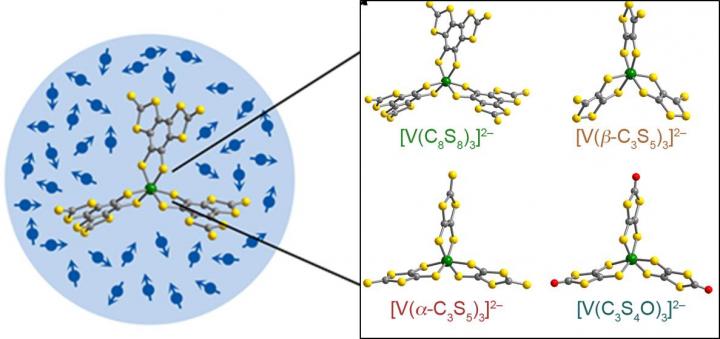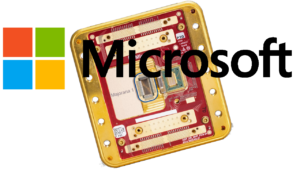The fact of the matter is, at the moment, we don’t have a universally recognized quantum computer; however, that hasn’t stopped visionaries from dreaming about the possibility of desktop quantum computers. Desktop quantum computing might sound like science fiction for a few reasons. First, to take advantage of quantum effects, quantum computers must use quantum bits (so-called qubits). Qubits are difficult to create and maintain. In fact, most traditional approaches used to create qubits require creating them in temperatures approaching absolute zero. Even then, it has proven difficult to maintain them for more than a few seconds. That leads to the second challenge. Universally recognized quantum computers are difficult to build (that’s why we don’t have a working model right now). In addition to having work with super-cooled infrastructure, quantum computers must be adequately shielded because quantum computing qubits can be disrupted by stray atomic particles. As a result of those challenges, the first quantum computers are likely to be bulky and expensive. The most important reason that researchers want to build a quantum computer is so they can change the analytic paradigm from sequential to simultaneous. “Whereas a small app like ‘Angry Birds’ takes up about 40,000 standard bits, a computer made with just 1,000 quantum bits, or ‘qubits,’ could easily and quickly break modern encryption schemes or more precisely model how a pharmaceutical drug candidate would perform in a person.”[1]
With so many challenges still confronting researchers trying to develop a viable quantum computing system, you might wonder why visionaries are now optimistic about the future of desktop quantum computing. Richard Gray (@chalkmark) explains, “The prospect of super-fast desktop quantum computers may be a step closer after scientists created a molecule that can function as a stable qubit. Qubits are the quantum computing equivalent of bits used in traditional computers, but they currently are only capable of holding information for tiny fractions of a second. Researchers have shown that a molecular complex of vanadium, carbon and sulphur may provide a solution to this problem.”[2] The following video, narrated by some of the Australian researchers at the University of New South Wales, helps explain why this breakthrough is notable.
Melissa Davey (@MelissaLDavey) observes, “In the race to build the first functional quantum computer scientists around the world have been trying to write quantum code in a range of materials such as caesium, aluminium, niobium titanium nitride and diamond. But researchers at the University of NSW have long been basing their research around silicon, because silicon is the building block of all modern electronic devices, which would make quantum code in a silicon microchip easier, more cost-effective and highly scalable.”[3] She continues:
“To mathematically prove the entanglement of the two particles had occurred, the finding had to past the Bells Test, a stringent and unforgiving test that detects even the most minor imperfection. The research passed the test with the highest score ever recorded in an experiment.”
Australian researchers are not the only researchers working with silicon in the area of quantum computing. Jamie Condliffe (@jme_c) reports, “A team from the University of Chicago has demonstrated that it’s possible to entangle electrons at room temperature in a silicon carbide wafer. To do that, the team used infrared laser light to align the magnetic states of thousands of electrons in a 40 micrometer-cubed volume of the semiconductor, then applied magnetic pulses to entangle them. And… it worked.”[4] Condliffe continues:
“The team reports that it was able to achieve the feat at normal room conditions, as opposed to down at the depths of temperature of -270 degrees usually required. It could prove to be a very big advance. David Awschalom, who led the research, explained in a press release that ‘the ability to produce robust entangled states in an electronic-grade semiconductor at ambient conditions has important implications on future quantum devices.’ And he’s right: quantum entanglement can in theory be used to create unbeatable encryption, as well as being put to use in quantum computing. Being able to perform it at room temperature means that complex and expensive cooling systems needn’t be required.”
Another team, this one from Northwestern University, has used a little chemical magic to create vanadium-based qubits. Gray reports, “Dr Danna Freedman, a chemist at Northwestern University in Evanston, Illinois, and her colleagues claim they may have found a way of making them last longer. … The researchers said their molecule, which has a core of vanadium surrounded by ‘arms’ of carbon and sulphur, outperforms other electron spin qubits, which are capable of only maintaining a state of superposition for a couple of microseconds.” Unlike the University of Chicago team, a qubit created at Northwestern “still needs to be chilled to -193.15°C (-315.67°F) in order to work, but [the Northwestern team] said this provides a stepping stone towards more practical quantum computers.”
Although people involved in encrypting data are not excited about the creation of a computer system that could break any traditional encryption scheme, other scientists are excited about the possibility. “Quantum computing may well represent the biggest breakthrough in computer technology since the invention of the microprocessor,” writes Lev Grossman. “Taking advantage of bizarre effects like quantum superposition and quantum entanglement, quantum computers have the potential to unlock massive amounts of processing power, and to solve problems that would take conventional computers literally centuries.”[5]
Footnotes
[1] American Chemical Society, “A quantum spin on molecular computers,” EurekaAlert!, 2 December 2015.
[2] Richard Gray, “Could we soon all have quantum computers on our desks?” Daily Mail, 2 December 2015.
[3] Melissa Davey, “Quantum computers a step closer to reality after silicon coding breakthrough,” The Guardian, 17 November 2015.
[4] Jamie Condliffe, “Physicists Can Now Achieve Quantum Entanglement at Room Temperature,” Gizmodo, 23 November 2015.
[5] Lev Grossman, “Quantum Computing: A Primer,” Time, 7 February 2014.





